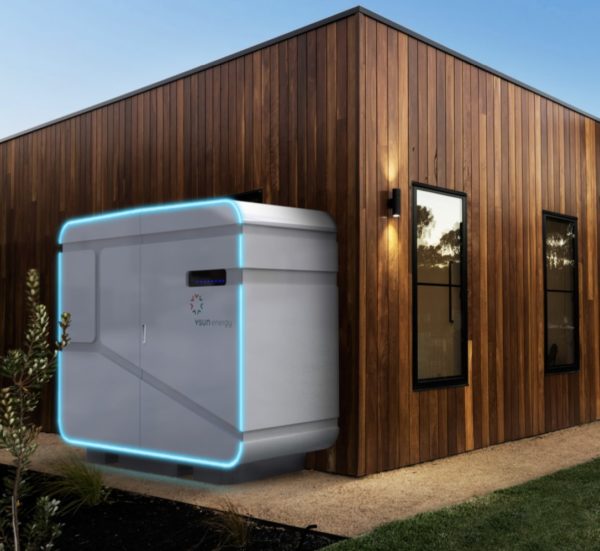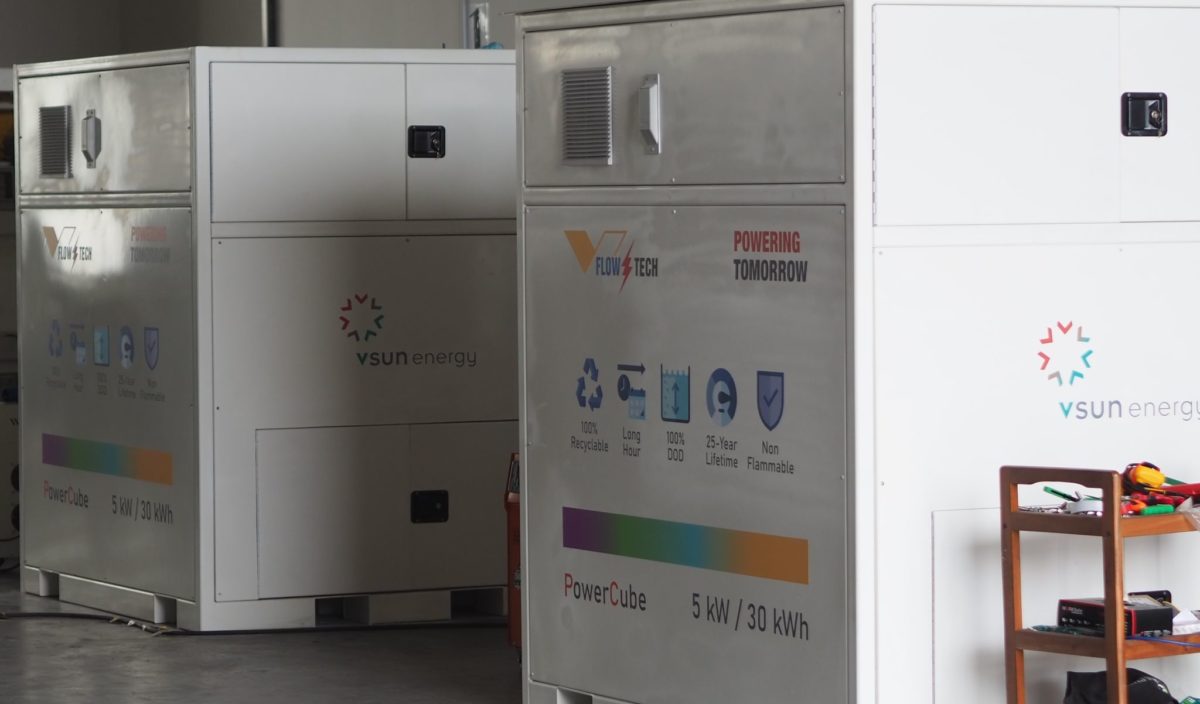Western Australian (WA) company VSUN Energy has revealed plans to install three vanadium redox flow batteries (VRFBs) supplied by Singaporean manufacturer V-Flow Tech as it looks to further develop the market for the battery storage technology in Australia.
VSUN, a subsidiary of Perth-based mining company Australian Vanadium Limited (AVL), has confirmed the first three VRFBs supplied to it by Singaporean partner V-Flow Tech will arrive in Fremantle later this month. VSUN said the vanadium electrolyte required for the 5 kW/30 kWh VRFBs has been sourced and will be installed when the batteries arrive in Australia.
The company said the three batteries have already allocated with one to be coupled with a 26 kW solar system at a caravan park in WA’s wheatbelt region while another will be deployed in an off-grid residential setting where it will be paired with 12 kW of solar and 18 KVa of diesel back-up.
The third 5 kW/30 kWh VRFB, which will have a maximum discharge of 7 kW, will be used in a test project being developed by one of the state’s energy utilities.
VSUN said the test site will enable the company, external engineers and potential clients to observe a local working example of a VRFB, rather than examining installations and data from other countries.
AVL managing director Vincent Algar said this will provide further proof of concept and the learnings required to support decisions on energy storage technology options.
“VSUN Energy and AVL have developed a strong relationship with V-Flow Tech and we are excited to be receiving V-Flow’s first batteries in Australia,” he said.
“The three installations will further increase our experience and provide valuable local operating examples of this Australian-invented storage technology.”

VSun
Lithium-ion batteries currently dominate the residential market but VRFBs are gaining traction with advocates declaring they are safer, more scalable, longer-lasting and more reliable.
VSUN, whose core objective is the growth of the market for VRFBs in Australia, said vanadium flow batteries don’t degrade with cycling like lithium-ion options and are able to move electricity without generating heat. V-Flow has said its technology can operate between -10°C to +55°C without active cooling. The batteries have a lifespan of 25 years, with a stable performance guarantee.
The rollout of the batteries is the latest step for AVL which was recently awarded a $3.69 million federal government manufacturing grant which will allow it to design, build and operate a $7.4 million commercial vanadium battery electrolyte plant in WA and develop VRFB prototypes for both off-grid and residential settings.
AVL plans to produce high-purity vanadium pentoxide (V2O5) from its mining operation south of Meekatharra and processing plant located east of Geraldton to supply VRFB projects in Australia and the Asia Pacific Region.
“AVL’s manufacturing grant from the Australian government enables us to accelerate the construction of Australia’s first vanadium electrolyte plant, to provide the key supply element to this emerging industry,” Algar said.
“The Australian Vanadium Project is at the forefront of this emerging market and driving its growth.”
AVL has also signed a Memorandum of Understanding with V-Flow for vanadium pentoxide offtake, vanadium electrolyte supply, VRFB sales, installation, service and maintenance.
VSUN aims to collaborate with V-Flow to develop the capability to undertake the majority of the manufacture of VRFB systems in Australia, with key elements such as the cell stacks being brought in from Singapore.
V-Flow , a spin-off from Nanyang Technology University in Singapore, has developed three products, including 20-50 kWh batteries for residential settings; 100-250 kWh units for commercial and industrial applications and micro-grids for remote communities; and larger utility-scale deployments.
This content is protected by copyright and may not be reused. If you want to cooperate with us and would like to reuse some of our content, please contact: editors@pv-magazine.com.









2 comments
By submitting this form you agree to pv magazine using your data for the purposes of publishing your comment.
Your personal data will only be disclosed or otherwise transmitted to third parties for the purposes of spam filtering or if this is necessary for technical maintenance of the website. Any other transfer to third parties will not take place unless this is justified on the basis of applicable data protection regulations or if pv magazine is legally obliged to do so.
You may revoke this consent at any time with effect for the future, in which case your personal data will be deleted immediately. Otherwise, your data will be deleted if pv magazine has processed your request or the purpose of data storage is fulfilled.
Further information on data privacy can be found in our Data Protection Policy.